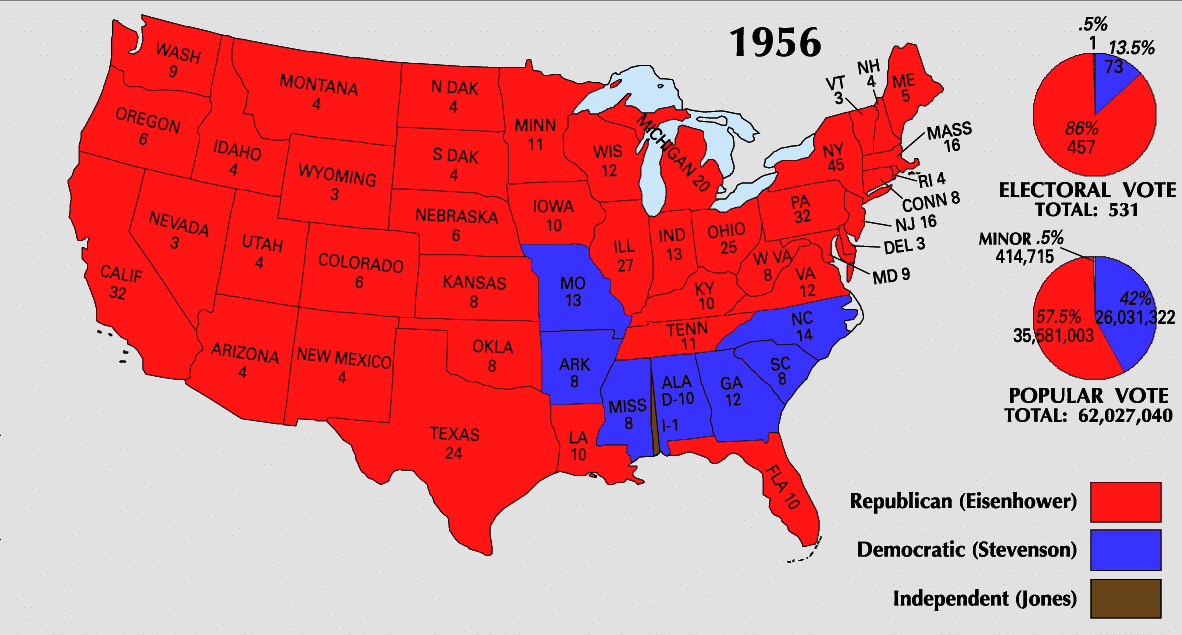The Presidential Election of 1956 came at a time when the Baby Boom generation was beginning to thrive.

The economy was booming, and Dwight Eisenhower had successfully pulled America out of the Korean War. It seemed as if the Republican party would not see much resistance to the presidency.
The Democrats still mounted an offensive attack that would try and cut into the Republican dominance throughout the country.
The candidates were as follows:
- Republicans: Dwight Eisenhower and Vice President Richard Nixon
- Democrats: Adlai Stevenson and Vice President Estes Kefauver
Platforms
The foreign policy still dominated the debate as the Cold War with the Soviet Union was still raging. However, other issues began to increase in importance, which included Civil Rights and the economy.
Republicans: Dwight Eisenhower had managed to accomplish most of what he wanted to do, and so much of his platform was his record as president. This included a booming economy, the end of the Korean War, and his influence during the Cold War. The only issue that seemed to be a concern with Eisenhower was his personal health.
Democrats: The Democrats again nominated Adlai Stevenson. Stevenson proposed significant increases in government spending for social programs and treaties with the Soviet Union to lower military spending and end nuclear testing on both sides. He also proposed to end the military draft and switch to an "all-volunteer" military.
Outcome
President Dwight Eisenhower won re-election handily and even increased his electoral victory by picking up states he had lost in 1952.
Eisenhower's strength was the female and African-American vote, as he carried both. While Stevenson had some ideas that Eisenhower privately supported, his view on government spending and lack of Civil Rights engagement was his doom.
Stevenson campaigned hard against Eisenhower, with television ads for the first time being the dominant medium for both sides. Eisenhower's 1952 election victory had been due in large part to winning the female vote; hence, during this campaign, there was a plethora of "housewife"-focused ads.
Some commentators at the time also argued that television's new prominence was a major factor in Eisenhower's decision to run for a second term at the age of 66, considering his weak health after the heart attack in 1955. Television allowed Eisenhower to reach people across the country without enduring the strain of repeated coast-to-coast travel, making a national campaign more feasible.
Also aiding Eisenhower was his exceptional handling of Middle-East crises that took place in Turkey and the Suez Canal.
